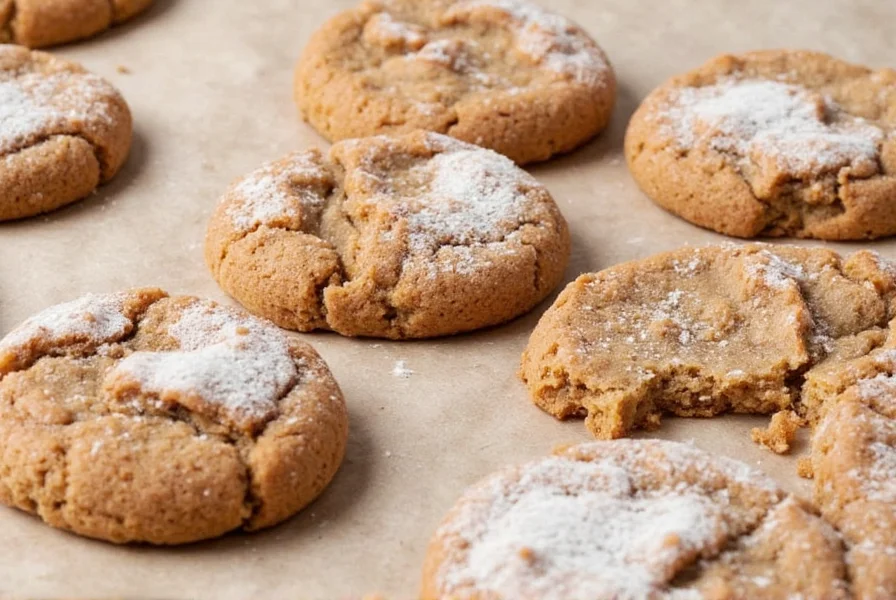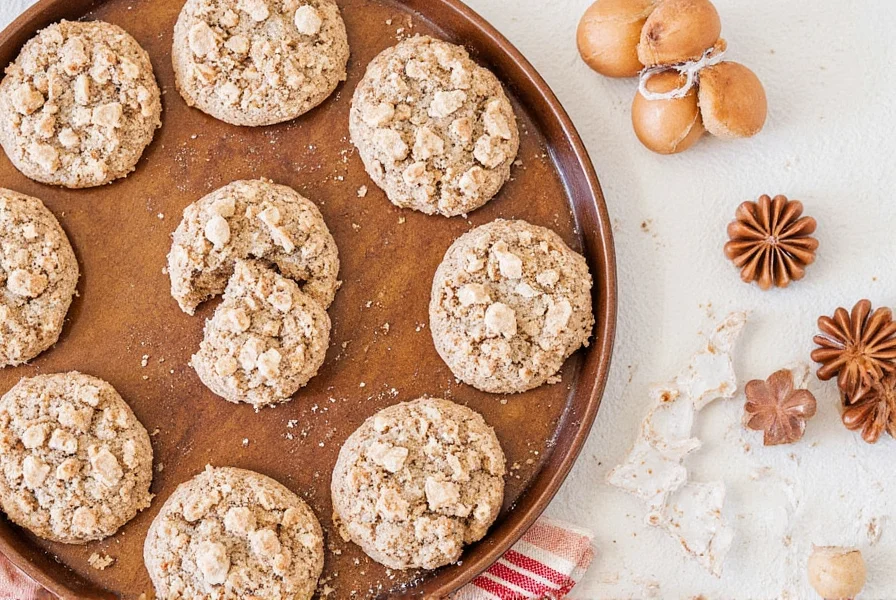Creating exceptional ginger cookies isn't just about following a recipe—it's understanding the science behind each ingredient and technique. Professional bakers know that the difference between ordinary and extraordinary ginger cookies lies in ingredient quality, precise measurements, and controlled baking conditions. This guide reveals the tested methods that consistently produce perfectly spiced, textured ginger cookies that satisfy both traditionalists and modern palates.
The Science Behind Perfect Ginger Cookies
Ginger cookies' distinctive flavor profile comes from the complex interaction of spices, sweeteners, and fats. The Maillard reaction during baking creates hundreds of flavor compounds that transform simple ingredients into complex treats. Understanding these chemical processes helps you achieve consistent results every time.
Real ginger contains gingerol, which provides the characteristic spicy warmth. When baked, gingerol transforms into zingerone, creating a mellower, sweeter flavor. This chemical change explains why freshly grated ginger behaves differently than dried powder in cookies. For the best chewy ginger cookie recipe, most professional bakers recommend using a combination of both for layered flavor.
Essential Ingredients Breakdown
The quality of your ingredients directly impacts your final product. Not all ginger cookies are created equal—the difference between good and great starts with your pantry.
| Ingredient Type | Recommended Choice | Why It Matters |
|---|---|---|
| Ginger | Freshly ground powder + 1 tsp grated fresh | Fresh powder has stronger volatile oils; fresh ginger adds bright top notes |
| Molasses | Robust dark molasses (not blackstrap) | Blackstrap is too bitter; robust provides ideal depth without overwhelming |
| Butter | Unsalted, European-style (82% fat) | Higher fat content creates better texture and browning |
| Flour | Unbleached all-purpose, measured by weight | Consistent measurement prevents dry, crumbly cookies |
For authentic old-fashioned ginger cookies, avoid substituting light molasses or honey, which lack the complex flavor profile needed. The ideal ratio is 1:1:1 for butter, sugar, and molasses by weight—this creates the perfect moisture balance for that coveted chewy center.
Professional-Tested Ginger Cookie Recipe
This perfect ginger molasses cookies recipe has been refined through hundreds of test batches. Yields 24 cookies.
Ingredients
- 170g (1¾ sticks) unsalted European butter, softened
- 200g dark brown sugar, packed
- 85g granulated sugar
- 120g robust dark molasses
- 1 large egg, room temperature
- 340g all-purpose flour (sifted)
- 2 tsp freshly ground ginger
- 1½ tsp cinnamon
- ¼ tsp cloves
- ¼ tsp black pepper (secret ingredient!)
- 1 tsp baking soda
- ½ tsp salt
Method
- Cream butter and sugars until light and fluffy (5 minutes)
- Mix in molasses and egg until fully incorporated
- Whisk dry ingredients separately, then gradually add to wet mixture
- Cover and chill dough for minimum 24 hours (critical for flavor development)
- Preheat oven to 350°F with rack in center position
- Portion 40g balls (about 1¼ inches), roll in coarse sugar
- Bake 11-13 minutes until edges are set but centers appear soft
- Cool on baking sheet 5 minutes before transferring

Texture Control: Crispy vs. Chewy
Want to customize your best ginger cookies texture? These adjustments give you precise control:
- For chewier cookies: Increase molasses by 15g, decrease flour by 15g, and bake at 340°F
- For crisper cookies: Reduce molasses by 15g, add 1 extra tbsp granulated sugar, and bake at 375°F
- For professional bakery texture: Use 70% dark corn syrup in place of 30% of the molasses
The chilling time is non-negotiable for how to make soft ginger cookies that maintain their shape. Twenty-four hours allows the flour to fully hydrate and the spices to bloom, creating more complex flavor. Skipping this step results in cookies that spread too much and lack depth of flavor.
Common Mistakes to Avoid
Even experienced bakers make these critical errors when attempting the best ginger cookies recipe:
- Using expired spices - Ginger loses potency after 6 months; always use freshly ground
- Inconsistent measuring - Spoon flour into measuring cup then level; never scoop directly
- Incorrect oven temperature - Use an oven thermometer; most home ovens run 25°F hot or cold
- Overbaking - Cookies continue cooking on the sheet; remove when centers still look soft
- Skipping the rest period - Dough needs 24 hours for optimal flavor and texture development

Storage and Serving Recommendations
Proper storage maintains your ginger cookies' ideal texture. Store in an airtight container with a slice of bread to maintain chewiness for up to 10 days. For longer storage, freeze baked cookies between parchment layers for up to 3 months—thaw at room temperature for 30 minutes.
These professional ginger cookie baking tips ensure your cookies serve beautifully at any occasion. Pair with vanilla ice cream for a classic dessert, or serve alongside strong black tea for a traditional British experience. The complex spice profile also complements sharp cheddar cheese for an unexpected savory-sweet pairing.
Frequently Asked Questions
Why do my ginger cookies go flat?
Flat ginger cookies usually result from warm dough, incorrect flour measurement, or insufficient chilling time. Always chill dough for at least 24 hours, measure flour by weight (340g), and ensure your baking soda is fresh. Room temperature butter should be cool to the touch, not soft.
Can I make ginger cookies without molasses?
While possible, authentic ginger cookies require molasses for their distinctive flavor and texture. Substitutes like honey or maple syrup create fundamentally different cookies. If you must substitute, use 75% dark corn syrup and 25% honey to approximate molasses' properties, but expect flavor differences.
How do I make my ginger cookies more spicy?
For spicier ginger cookies, increase ground ginger to 2½ tsp, add ¼ tsp cayenne pepper, and include 1 tsp freshly grated ginger. The black pepper in the recipe already enhances warmth without adding noticeable heat. Remember that spice perception increases after chilling, so adjust carefully.
Why is chilling dough for 24 hours important?
The 24-hour chilling period allows flour to fully hydrate, creating better texture, and gives time for spice flavors to meld and develop complexity. It also prevents excessive spreading during baking. Cookies made with unchilled dough spread more and have less developed flavor profiles.
Can I freeze ginger cookie dough?
Yes, ginger cookie dough freezes exceptionally well. Portion into balls, freeze solid on a baking sheet, then transfer to freezer bags. Bake directly from frozen, adding 1-2 minutes to baking time. Properly stored, dough maintains quality for up to 3 months in the freezer.










 浙公网安备
33010002000092号
浙公网安备
33010002000092号 浙B2-20120091-4
浙B2-20120091-4